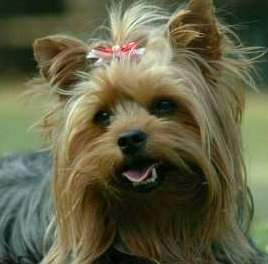
Aggression is the most troubling problem that comes between people and their pets. If you have a dog who isn’t safe with other people or dogs, or may have attacked you, this dog is not date bait. In fact, you need to address your dog’s aggression before you focus on your own love life. If you don’t address this right away, it will only get worse.
Here are a few ideas that might help:
Find a trainer or behaviorist who uses gentle methods. Far more often than not, if you treat aggression with force, the problem will escalate. This trainer will probably have you follow a plan in which your dog has to work for a living: Every time you give him food, or even a gentle pat, he needs to sit, lie down, or do something else to show that he’s earning his keep. (The thinking goes that in the wild, the top dog in the pack controls who gets food and attention. When the dog has
to work for you to get food and attention, he views you as the big dog in charge, and treats you with more respect.)
Teach your dog “watch me.” Your dog can’t get into fights or attack people if he’s looking at you. Dogs’ bodies follow their eyes. Teach your dog “watch me” by holding a treat in front of your eyes. When he stares longingly at your face, say “Good watch me!” and give him the treat. Over time, hold the treat in your hand but only reward the dog when he looks in your eyes. Build up the length of time of the eye contact, so you can ask your dog to “watch me” when trouble comes near, and he will focus on you until the temptation has passed.
Use a head collar. Head collars (brands such as Halti Collar and Gentle Leader) fit over your dog’s head, just like a halter
fits on a horse. Just as you can lead a horse wherever you want to go with a halter, so you can lead even a big dog with a head collar. In addition, the feeling of the strap over the dog’s nose is something like the way a top dog gently nuzzles
the muzzle of a lower-ranking dog, so over and over the head collar is telling your dog that you’re the boss—and he isn’t. Sometimes that gentle reminder will make an almost magical difference in a dog.
Know your dog. Know what triggers your dog, and avoid those situations. So if he’s dog-aggressive, don’t take him to the dog park: That’s just asking for an awful incident. If he growls when people come within four feet—stay five feet away.
With expert help and a lot of patience, your aggressive dog might turn the corner and become a safe, reliable citizen. And with all the dog trainers you’ll be meeting, you never know where you’ll find love.





























